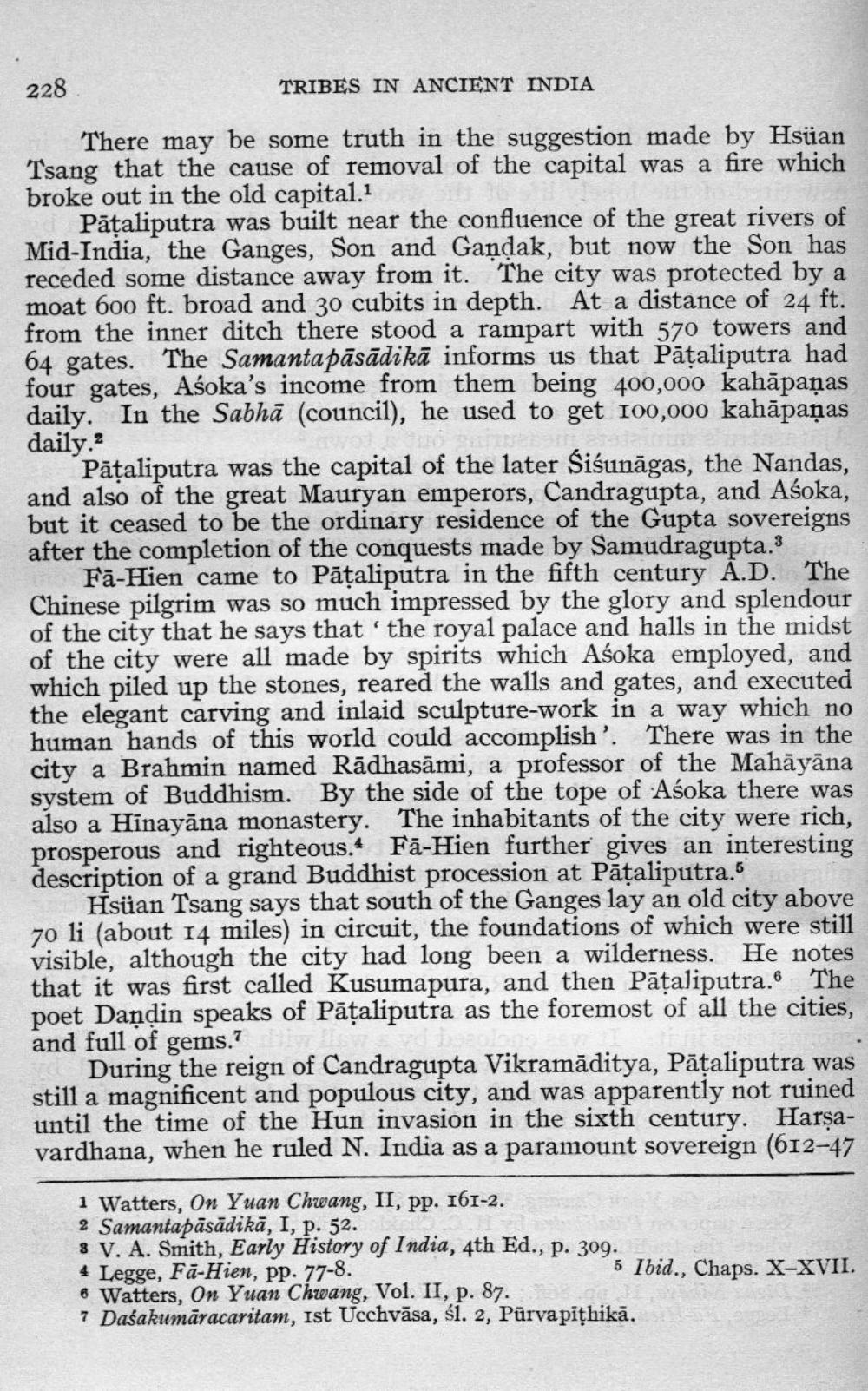________________
228
TRIBES IN ANCIENT INDIA
There may be some truth in the suggestion made by Hsuan Tsang that the cause of removal of the capital was a fire which broke out in the old capital.1
| Pataliputra was built near the confluence of the great rivers of Mid-India, the Ganges, Son and Gandak, but now the Son has receded some distance away from it. The city was protected by a moat 6oo ft. broad and 30 cubits in depth. At a distance of 24 ft. from the inner ditch there stood a rampart with 570 towers and 64 gates. The Samantapāsādi kā informs us that Pataliputra had four gates, Aśoka's income from them being 400,000 kahāpaņas daily. In the Sabhā (council), he used to get 100,000 kahāpaņas daily.
Pāțaliputra was the capital of the later Sisunāgas, the Nandas, and also of the great Mauryan emperors, Candragupta, and Asoka, but it ceased to be the ordinary residence of the Gupta sovereigns after the completion of the conquests made by Samudragupta.3
Fā-Hien came to Pāțaliputra in the fifth century A.D. The Chinese pilgrim was so much impressed by the glory and splendour of the city that he says that the royal palace and halls in the midst of the city were all made by spirits which Aśoka employed, and which piled up the stones, reared the walls and gates, and executed the elegant carving and inlaid sculpture-work in a way which no human hands of this world could accomplish'. There was in the city a Brahmin named Rādhasāmi, a professor of the Mahāyāna system of Buddhism. By the side of the tope of Asoka there was also a Hīnayāna monastery. The inhabitants of the city were rich, prosperous and righteous. Fā-Hien further gives an interesting description of a grand Buddhist procession at Pāțaliputra.5
Hsüan Tsang says that south of the Ganges lay an old city above 70 li (about 14 miles) in circuit, the foundations of which were still visible, although the city had long been a wilderness. He notes that it was first called Kusumapura, and then Pātaliputra. The poet Dandin speaks of Pāţaliputra as the foremost of all the cities, and full of gems.?
During the reign of Candragupta Vikramāditya, Pāțaliputra was still a magnificent and populous city, and was apparently not ruined until the time of the Hun invasion in the sixth century. Harşavardhana, when he ruled N. India as a paramount sovereign (612-47
1 Watters, On Yuan Chwang, II, pp. 161-2. 2 Samantapāsādikā, I, p. 52. 3 V. A. Smith, Early History of India, 4th Ed., p. 309. 4 Legge, Fā-Hien, pp. 77-8.
5 Ibid., Chaps. X-XVII. 6 Watters, On Yuan Chwang, Vol. II, p. 87. 7 Dašakumāracaritam, ist Ucchvāsa, śl. 2, Pūrvapithikā.




